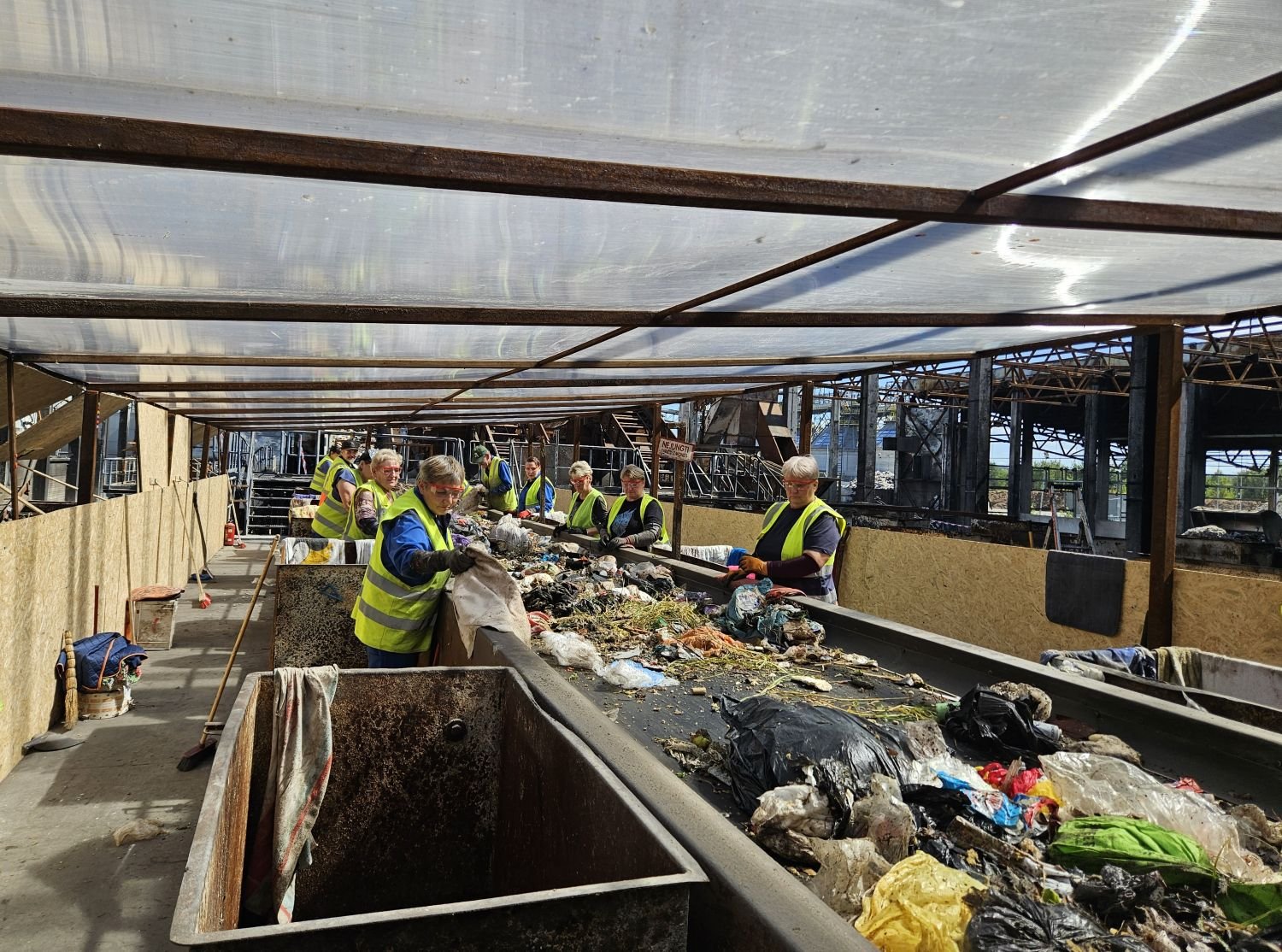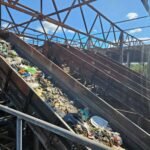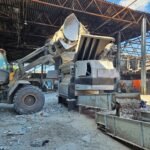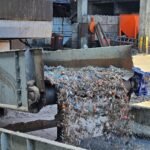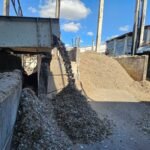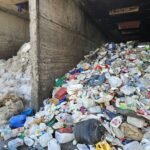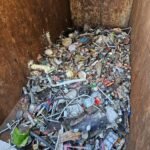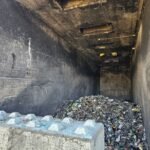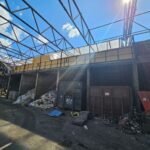We have repaired and restarted one of the three stationary sorting lines inside the factory. This enables us to process mixed household waste more quickly. We also resumed the production of the SRF product, which is once again being delivered to the cement factory in Akmene.
Additionally, we have doubled the amount of waste supplied to the Vilnius Combined Heat and Power Plant, from an average of 300 to 700 tons per day.
Line inside the factory
“We have taken a major step forward – we repaired and relaunched our shredder and stationary sorting line. With this line, we already sort about one-third of the mixed waste, separating plastics, metal, glass, electronics, tires, and other waste. This has accelerated our work and normalized waste flows within the factory,” says Algirdas Blazgys, Director of Energesman.
Until now, waste had been sorted with two mobile sorting lines, and this work was carried out in the factory yard. Space there was limited, since the yard also had to be used for unloading incoming waste and storing sorted fractions.
“The big advantage of the stationary line is that it is located inside the factory – this expands the area where we can work,” Blazgys adds.
The repaired stationary sorting line and shredder had suffered relatively little damage. Company specialists replaced motors, rotary drum parts, conveyor belts, and gearboxes. A shelter for employees was built, lighting was installed, testing work was completed, and the line was launched for continuous operation.
From the waste sorted and shredded on this line, we mainly produce SRF, which is transported to the Akmene cement plant. After the technological process, the waste becomes part of cement and is further used in construction.
Last year, we produced more than 18,000 tons of this product – the largest volume among waste sorting companies in Lithuania.
Increased supply for incineration
Together with UAB VAATC and regional municipalities, an agreement was reached with the Vilnius Combined Heat and Power Plant to increase the amount of waste supplied for incineration from an average of 300 to 700 tons per day.
Energesman has a contract with the Vilnius Combined Heat and Power Plant to deliver 125,000 tons of sorted waste per year for incineration. However, the plant wants to receive most of this flow during the winter heating season, while in summer, the amount accepted is significantly reduced.
“The amount of waste generated by residents does not decrease in summer – people produce household waste all year round. Our area for storing waste until the power plant accepts it is currently limited, so it is important for us that the CHP plant does not reduce the volume of waste it receives from us,” says Blazgys.
Preparing for reconstruction
The stationary waste sorting line could only be repaired after all inspections had been completed and damaged building structures in that part of the factory had been dismantled.
An assessment of the damage to the factory has already been carried out. Company specialists, together with experts in construction, equipment, and other fields, calculated that the damage to sorting equipment amounts to about EUR 2 million, and about EUR 1 million to building structures.
Demolition work is still ongoing in unused parts of the factory. Once it is completed, reconstruction will begin. First, the factory building will be renovated – part of the roof, wall cladding, and supporting structures will be replaced. After that, new sorting equipment will be installed.
“We aim to restore modern and up-to-date equipment and further improve sorting efficiency so that we can create as much value as possible from waste. At the moment, we are visiting equipment manufacturers and other waste processors – we are learning from their experience with robotic solutions and intend to apply this knowledge in our factory,” Blazgys explains.
Recovering more than other regions
Last year, 219,000 tons of mixed and food waste were sorted at the Vilnius MBT plant operated by Energesman.
From this amount, the following materials were recovered and sent for recycling:
- 2,433 tons of plastic
- 3,142 tons of glass
- 2,168 tons of metals
- 1,568 tons of paper
“We are the leaders among other regions in terms of the amount of secondary raw materials recovered – and we believe that after rebuilding a more advanced plant, we will be able to improve these figures even further,” says Blazgys.
We had already developed and implemented a technological process to extract almost all the glass from waste, which was then used to produce bricks and blocks for house construction.

